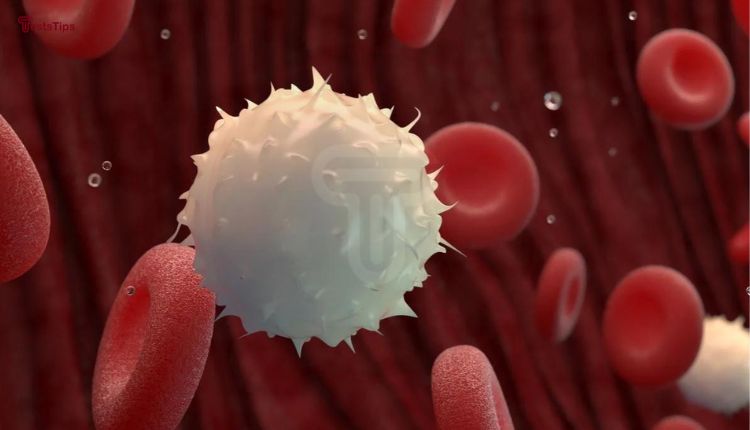White Blood Cell Count Test ( WBCs). What is its purpose?
White Blood Cell Count
A white blood cell count, or WBCs test measures how many white blood cells you have. Learn more about why this test is conducted and what to expect.

Table of Contents
A white blood cell count, or WBC, test measures the number of white blood cells in a person’s bloodstream. This is done to help diagnose and monitor various infections, diseases, and conditions such as anemia and leukemia. Learn more about WBC tests, what they demonstrate, and the expected outcomes here.
What is a WBCs test Count?
A white blood cell count test is a diagnostic procedure that measures the amount of white blood cells (or leukocytes) in a person’s bloodstream. White blood cells are part of the immune system That helps your body fight infections.
When you become ill, your body produces an increase in white blood cells to combat the bacteria, viruses, or other foreign substances that are causing your illness. This raises your white blood cell count.
The number of white blood cells can provide information about a variety of medical conditions, such as infections and immune system disorders, as well as cancer.
Other illnesses can cause your body to produce fewer white blood cells than necessary. This reduces your white blood cell count. Some cancers and HIV/AIDS, a viral disease that attacks white blood cells, can lower your white blood cell count. Certain medications, including chemotherapy, may reduce the number of white blood cells in your body.
Blood WbCs are also called leukocytes, WBcs exam, WBC count, White cell count, Total leucocytes count, TLCs.
Types of white blood cells
White blood cells are classified into five types:
- Lymphocytes
- Neutrophils
- Eosinophils
- Monocytes
- Basophils
The total number of these cells in your blood is measured by a white blood count. A blood differential test measures the amount of each type of white blood cell.
What are the Benefits of a WBC Count?
A white blood cell count (WBC) is a common test that is used to help diagnose a variety of disorders. A WBC count measures the total number of WBCs contained in a sample of blood.
There are many benefits to having a high WBC count. For example, a high WBC count can help you detect and treat certain disorders early. Additionally, a high WBC count can also help you fight against infections. In fact, a WBC count is often used to determine if someone has an infection.
Despite the many benefits of a high WBC count, there are also some risks associated with having a high WBC count. For example, a high WBC count can increase your risk for getting sick from other infections. Additionally, a high WBC count can also increase your risk for getting sick from cancer. However, by monitoring your WBC count and consulting with your doctor, you can minimize the risks associated with having a high WBC count.
What is its purpose?

There are many different reasons why your doctor might order a WBC count. The most common reason is to determine whether you have an infection. If you are feeling sick and your doctor thinks you might have a virus or bacterial infection, a WBC count may be necessary to determine which type of infection you have.
Disorders associated with a high white blood count include:
- Autoimmune and inflammatory diseases occur when the immune system attacks healthy tissues.
- Infections caused by bacteria or viruses
- Leukemia and Hodgkin disease are examples of cancers.
- Reactions to allergens
Disorders associated with a low white blood count include:
- Immune system diseases, such as HIV/AIDS.
- Lymphoma is a bone marrow cancer.
- Liver and spleen disorders.
A white blood cell count can indicate whether your white blood cell count is abnormally high or abnormally low, but it cannot confirm a diagnosis.
If you are pregnant, your doctor may also order a WBC count during your early prenatal care. This is because white blood cells can help protect the baby during pregnancy.
Why do I require a white blood cell count?
If you have symptoms of an infection, inflammation, or autoimmune disease, you may require this test. Infection symptoms include:
- Fever
- Chills
- Aches and pains throughout the body
Depending on the area of inflammation and the type of disease, the symptoms of inflammation and autoimmune diseases will differ.
This test may also be required if you have a disease that weakens your immune system or are taking medication that reduces your immune response.
If the test results show that your white blood cell count is dropping too low, your provider may be able to modify your treatment.
Your infant or older child may be tested as part of a routine screening or if they exhibit symptoms of a white blood cell disorder.
How to Prepare for a WBC Test
If you are scheduled to have a WBC test, make sure to prepare for the test by following the tips listed below. First, drink plenty of fluids so that your blood cells are well hydrated. Second, avoid caffeine and alcohol before the test. These substances can increase your blood’s level of inflammation and therefore decrease your WBC count.
“Related: Xylose Testing. Everything You Need To Know About D-xylose tolerance“
Normal Range of TLCs
A normal white blood cell count (TLCs) can indicate that your immune system is healthy. A white blood cell count should be between 4,000 and 11,000/microliter. A normal range can be determined by factors such as age and gender.
- Adult men : 5,000 to 10,000
- Adult women: 4,500 to 11,000
- Children: 5,000 to 10,000
It should be noted that pregnant women may have a white blood cell count that falls outside of these ranges. Newborns and children under the age of two may have different ranges than those listed above.
These normal ranges can also differ depending on the lab. A reference range may be included on your report by the lab that performed your test.
What do the findings imply?
A high white blood cell count could indicate one of the following conditions:
- An infection, either bacterial or viral
- Rheumatoid arthritis is an inflammatory disease.
- Tissue damage as a result of a burn injury or surgery
- A leukaemia or Hodgkin disease allergy
A low white blood cell count could indicate one of the following conditions:
- Damage to the bone marrow. This could be due to an infection, a disease, or a treatment such as chemotherapy.
- Lupus is an example of an autoimmune disorder (or SLE)
- Cancers affecting the bone marrow
- HIV/AIDS
If you are already receiving treatment for a white blood cell disorder, your results may indicate whether your treatment is effective or whether your condition has improved.
Related tests
- Complete Blood Count (CBC)
- Blood Differential
- Blood Smear
- Bone Marrow Tests
The white blood cell count (wbcs) test is a common test that is used to help diagnose infections, inflammation, and other health conditions that affect white blood cells. The wbcs test is also used to monitor the response to treatment for these conditions. When the results of a wbc test are outside the normal range, it may be indicative of a health condition.
